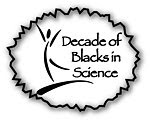The House Sparrow is perhaps the most common bird in the world. This little brown bird is everywhere – no kidding. The bird was actually brought to the United States from Europe in the 1840’s. Originally released in Central Park New York , these little birds are spread all over the U.S. map. And they seem to thrive in cities!
I met Dr. Peter Pap at the 12th Annual ISBE conference at Cornell University and found his research about the House Sparrow so great. He looked at the size and colors of the feathers on the chest, called a bib, and at the feathers on the underside of the wing. The bib of the male House Sparrow is actually very distinct and stands out like a big black patch. If you were to pluck one of these feathers you’d find that it is actually both black and white, with black being the dominant color. Also, not all bibs are the same size. Some bibs are larger than others. Why is that? That’s what Dr. Peter Pap set out to discover.
I met Dr. Peter Pap at the 12th Annual ISBE conference at Cornell University and found his research about the House Sparrow so great. He looked at the size and colors of the feathers on the chest, called a bib, and at the feathers on the underside of the wing. The bib of the male House Sparrow is actually very distinct and stands out like a big black patch. If you were to pluck one of these feathers you’d find that it is actually both black and white, with black being the dominant color. Also, not all bibs are the same size. Some bibs are larger than others. Why is that? That’s what Dr. Peter Pap set out to discover.
 He hypothesized that birds with larger black bibs were in better condition and better fed than birds with smaller black bibs. He fed birds different types of diets – high and low quality diets – and later measured the size of their bibs. Better fed birds, the ones in better condition did have larger black bibs.
He hypothesized that birds with larger black bibs were in better condition and better fed than birds with smaller black bibs. He fed birds different types of diets – high and low quality diets – and later measured the size of their bibs. Better fed birds, the ones in better condition did have larger black bibs.
 In nature this can be a very important difference. Birds in better condition are able to secure better territories and mates so that they can have more babies. Considering how much some people like to feed birds and put out bird feeders, we may actually be contributing to the overall better quality of birds in our neighborhoods.
In nature this can be a very important difference. Birds in better condition are able to secure better territories and mates so that they can have more babies. Considering how much some people like to feed birds and put out bird feeders, we may actually be contributing to the overall better quality of birds in our neighborhoods.Look out for House Sparrows and take a closer look at that black bib on its chest.
Are the bibs of different birds the same size or do they differ?
Are the bibs of birds who frequently visit bird feeders nearly all the same or do you see of differences?
















No comments:
Post a Comment